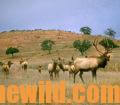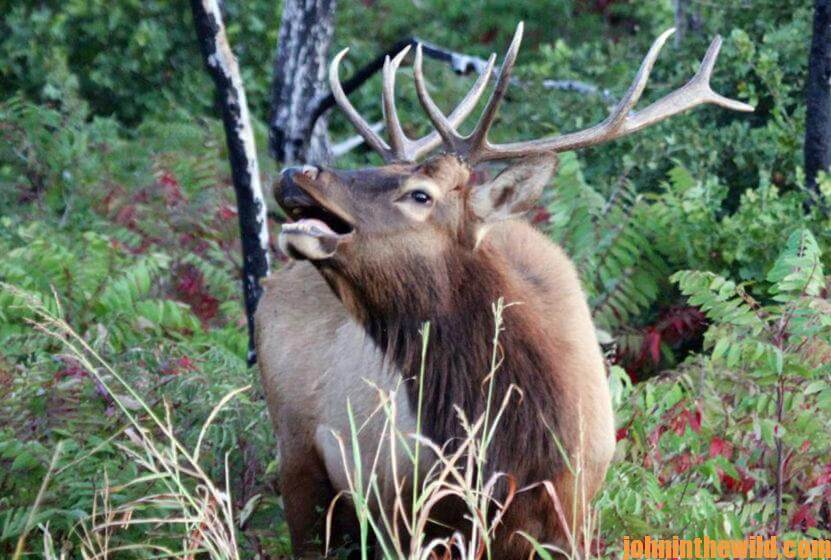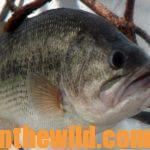Editor’s Note: Dieter Kaboth of Idaho, an avid elk hunter and former regional director for the Rocky Mountain Elk Foundation (https://www.rmef.org/), is a four-time World Champion elk bugler.
Although I’ve hunted elk many times on ranch lands, I primarily hunt public lands. I’ve called-in hundreds of elk but have taken about one-fourth of those. Most of the time I’m calling-in elk for friends and family members. But I do have an archery-season technique and a rifle-season tactic I use for taking bulls on public lands in the several different states I hunt.
In Oregon, archery elk season runs from August 29 – September 27, 2021. During the beginning of elk season, which is before and during Labor Day weekend, the bulls there aren’t very vocal. Although I don’t know where the bulls are, at this time of year, I generally call-in the biggest bulls of the season. Too, during this time, the bulls haven’t mated yet, so they usually are congregated in bachelor groups.
To successfully take bulls with a bow during archery season, find an area with a lot of elk sign. You’ll generally identify these types of places on a north-facing slope with water drainages. I’ll go to these sites in the evening. Since I know elk are in the region and can hear me, I’ll start calling. Typically, a bull will come-in silently, and I won’t even know he’s there until I see him, or he gets downwind of my location and smells me.
Calling Elk:
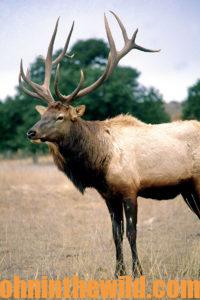 I use both cow and bull calls when I’m hunting early-season elk. To get the bulls to come-in, I’ll create an illusion of two bulls calling to each other. I’ll use a call that sounds like a herd bull and call in one direction. Then I’ll use a different call that may sound like a young satellite bull and call in the other direction. Since I’m trying to get the elk out of their beds just before they feed at night, I’ll start this type of calling at about 5:30 pm, call about every 10 to 12 minutes and wait on the bulls to move to me.
I use both cow and bull calls when I’m hunting early-season elk. To get the bulls to come-in, I’ll create an illusion of two bulls calling to each other. I’ll use a call that sounds like a herd bull and call in one direction. Then I’ll use a different call that may sound like a young satellite bull and call in the other direction. Since I’m trying to get the elk out of their beds just before they feed at night, I’ll start this type of calling at about 5:30 pm, call about every 10 to 12 minutes and wait on the bulls to move to me.
At this time of year in the early elk season, I use a slightly-different set-up. I want a crossing wind, so the wind is coming from my left or my right. I’ll put my hunter facing the wind, but downwind of me about 70-yards away. As a bull covers ground, he’ll more than likely come in downwind. By putting my hunter about 70-yards downwind of me with his bow, then when the bull arrives and crosses the wind carrying the scent of the bull he thinks he’s heard, my hunter will be able to get the shot.
I also give cow calls. To paint a realistic picture in a bull’s mind of a herd of elk, I’ll give the herd bull call and then a satellite bull call in another direction. I want the bull I’m trying to call-in to think that the ole herd bull has quite a few cows around him already, and that this satellite bull is bugling back and forth to him.
You have to remember that elk are herd animals and like to be with other elk. If you can make the sounds of a herd of elk calling to the bull, enticing the bull to come-in to a herd is much easier than calling him to one lone elk. I use both double-reed and triple-reed calls when I’m bugling and trying to sound like a bull elk.
Being Scent-Free on Public Lands Is Important:
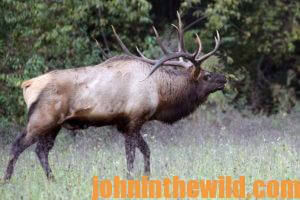 Elk generally will move-in downwind to attempt to pick up the smell of the bull that’s been bugling. That’s why I like the Scent-A-Way system (https://www.hunterspec.com/product/scent-a-way). Early in my elk-hunting career, I didn’t use the Scent-A-Way system, and when I’d call-in bulls, they’d circle downwind, pick-up my scent and run away. However, since I’ve been using the Scent-A-Way system, I’ve been far-more successful calling-in and taking bulls on public lands.
Elk generally will move-in downwind to attempt to pick up the smell of the bull that’s been bugling. That’s why I like the Scent-A-Way system (https://www.hunterspec.com/product/scent-a-way). Early in my elk-hunting career, I didn’t use the Scent-A-Way system, and when I’d call-in bulls, they’d circle downwind, pick-up my scent and run away. However, since I’ve been using the Scent-A-Way system, I’ve been far-more successful calling-in and taking bulls on public lands.
When trying to eliminate human odor, most hunters forget their watch bands, although those bands are constantly collecting and dispensing human odor. When I’m hunting, I take off my watch, put it in a Ziploc bag and store it in my backpack. I’ll take the time to set-down my backpack, pull-out the Ziploc bag with my watch in it, look at the time and then return my watch back to my pack, rather than knowingly wear a watch that has human odor on its band. The more mindful you are of your scent, the more elk you’ll see and take.
 Many times you’ll have a chance to prepare for the shot when calling-in a silent bull. When the bulls show-up close, they’ll become nervous like turkey gobblers do. And sometimes, though not always, they’ll bugle when they think they’re getting closer to the herd that’s been talking to them, or you’ll hear them walking. A bowhunter usually wants to hear an elk bugle, go to him, get as close as he can and try to take the shot. But early in the season, when elk aren’t very vocal, your calling, set-up and scent-elimination skills not only will pay-off in big-bull dividends, but many times you’ll have an opportunity to take one of the biggest bulls in the area.
Many times you’ll have a chance to prepare for the shot when calling-in a silent bull. When the bulls show-up close, they’ll become nervous like turkey gobblers do. And sometimes, though not always, they’ll bugle when they think they’re getting closer to the herd that’s been talking to them, or you’ll hear them walking. A bowhunter usually wants to hear an elk bugle, go to him, get as close as he can and try to take the shot. But early in the season, when elk aren’t very vocal, your calling, set-up and scent-elimination skills not only will pay-off in big-bull dividends, but many times you’ll have an opportunity to take one of the biggest bulls in the area.
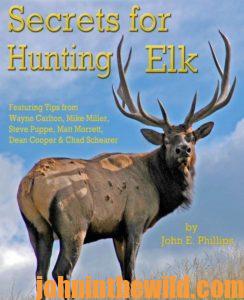 To learn more about hunting elk successfully, check out John E. Phillips’ book, “Secrets for Hunting Elk,” available in Kindle and Audible at https://www.amazon.com/.
To learn more about hunting elk successfully, check out John E. Phillips’ book, “Secrets for Hunting Elk,” available in Kindle and Audible at https://www.amazon.com/.
You may have to copy and paste this click into your browser. (When you click on this book, notice on the left where Amazon allows you to read 10% of the book for free).


